
Second-Hand Toddler Beds: Your Safety Verification Checklist
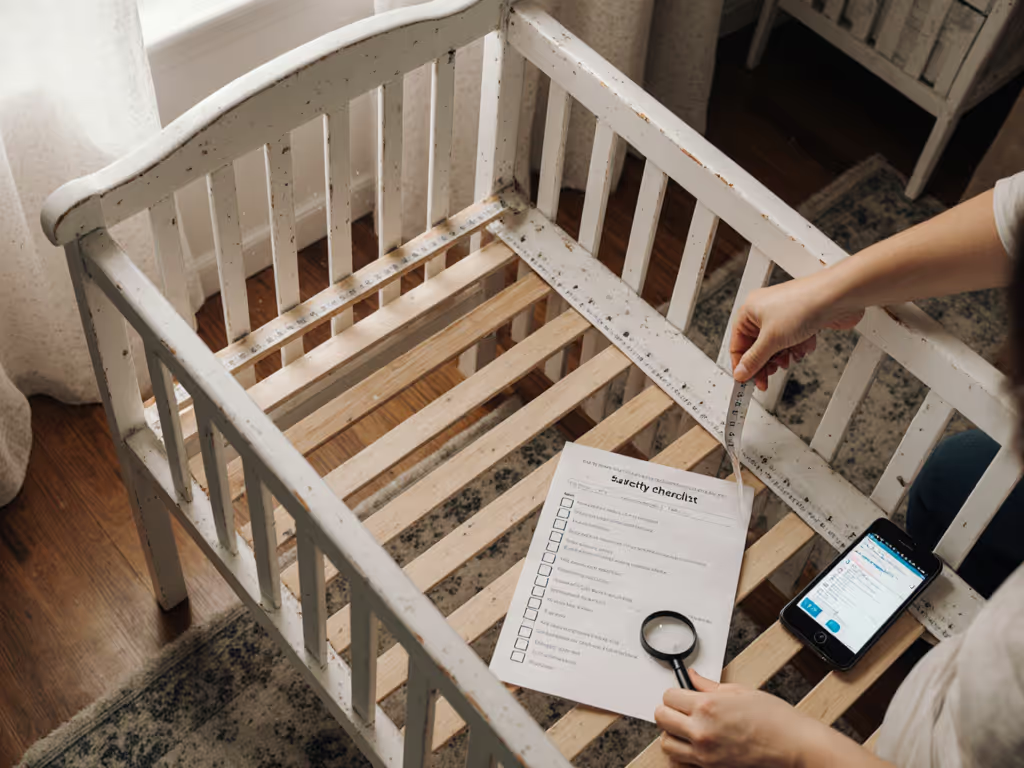
When space-starved parents face the crib-to-bed transition, second-hand toddler beds often seem like a lifesaver. But that bargain beauty from a thrift store or Facebook Marketplace hides critical risks most buyers overlook, especially concerning used toddler bed safety. As a former materials researcher turned eco-conscious parent, I've tracked how invisible off-gassing and structural fatigue turn "sustainable" finds into sleep disruptors. Remember: If you can smell it, plan to air it. That hallway-week odor test I ran on our first toddler bed taught me that invisible comfort matters as much as cushioning. Let's decode what truly makes a second-hand bed safe for your compact nursery.
Why 'Like New' Isn't Always Safe: The Hidden Timeline Risks
You might assume a gently used bed beats a cheap new one. But safety standards evolve fast. After 2011, the CPSIA (Consumer Product Safety Improvement Act) mandated stricter lead limits and slat spacing rules (a fact confirmed by a 2023 industry report tracking 11 million recalled nursery products since 2010). Older beds often fail modern benchmarks.
Critical verification steps:
- Check the manufacture date: Anything pre-2011 requires extreme vetting. Contact the seller for proof of purchase or model numbers. Without this, walk away. (Recall databases only track registered models.)
- Test for hidden recalls: Use the brand/model to search recall databases. One-third of recalled items never get reported by sellers, per National Consumer Affairs data.
- Inspect the off-gassing timeline: Even "clean-smelling" used beds can re-emit VOCs when heated. Bring a low-cost VOC meter (under $50) to the pickup. Levels above 500 ppb indicate active off-gassing, especially risky in poorly ventilated apartments.
Smart buyers know: Just because it looks intact doesn't mean it meets current safety engineering. That smooth finish could hide solvent-heavy chemistry from outdated regulations.
Material Matters: Decoding Finishes & Structural Integrity
Avoid glossy "child-safe" finishes unless certified. As our search results confirm: "These often contain solvents or hardening agents that can leach toxins over time." Matte or satin water-based finishes are safer bets, but verifying them on used items requires detective work.
Your finish chemistry field test:
- Scratch test: Gently scrape an inconspicuous corner with a coin. Chalky residue = unfinished wood (a splinter hazard). Thick, plastic-like flakes = old solvent-based finish (high VOC risk).
- Odor check: Trap the bed in a plastic bag for 24 hours. Strong chemical smells upon opening? Avoid it. Natural wood shouldn't smell like a paint aisle after airing.
- Certification hunt: Look for GREENGUARD Gold stickers or CARB Phase 2 compliance marks. No visible labels? Ask for purchase receipts showing the original model name, then cross-reference it.
Solid vs. engineered wood clarity is non-negotiable here. Cheap particleboard frames warp permanently after years of use, creating gaps where little limbs could get trapped. Never trust a bed that creaks during the "shake test" (firmly grip the frame and jiggle). If it wobbles, structural joints are compromised, a major fall risk in tight spaces where walls aren't close enough for backup support.
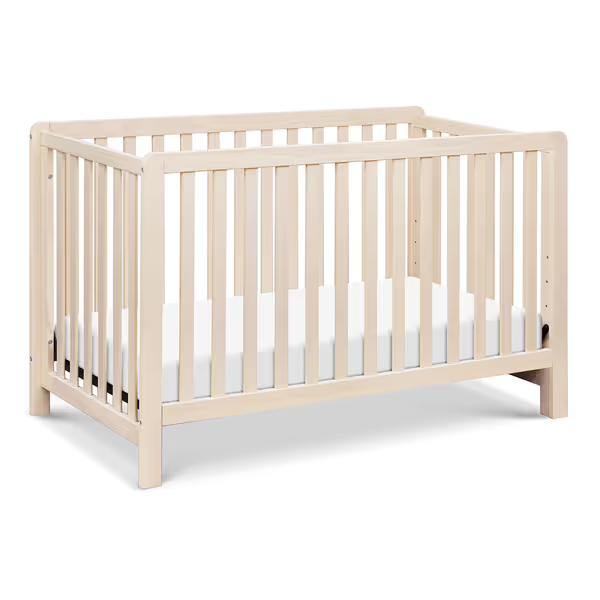
Carter's by DaVinci Colby 4-in-1 Convertible Crib
Guardrail Safety: The 5-Inch Rule Most Parents Miss
Guardrails prevent 60% of toddler bed injuries, but ill-fitting ones create new dangers. Search results reveal the tight safety window: "Rails should sit no lower than 5 inches and no higher than 9 inches above the mattress." For step-by-step measurement and setup tips, see our 5-inch guardrail rule guide. Too low? Your child rolls out. Too high? They'll climb over when exploring independence.
Your guardrail checklist:
- ✅ Height test: Use a tape measure against the actual mattress (not an empty frame). 5-9 inches is the sweet spot.
- ✅ Gap check: Slide a toilet paper roll between rail and mattress. If it fits, limbs could get stuck.
- ✅ Attachment audit: Bolts, not plastic clips, must anchor rails. Wiggle joints hard; any play means imminent failure.
Note: Adjustable rails (common in convertibles like the DaVinci Colby) need extra scrutiny. Sellers often lose hardware or strip screw holes. Always demand all original mounting brackets, since improvised fixes compromise safety in renter-friendly setups where walls can't be modified.
Structural Survival Test: Slats, Weight Limits & Your Apartment Layout
Tiny bedrooms amplify risks. A wobbly bed blocks narrow pathways; flimsy slats collapse under active sleepers. Your verification:
- Slat spacing: Must be <= 2 3/8 inches apart (a standard soda can width). Wider gaps risk head entrapment. This is non-negotiable (verified in 10+ safety standards including ASTM F1821).
- Load test: Sit firmly on all four corners. Listen for creaks. Then place 50 lbs of weight (e.g., gallon jugs of water) on the mattress edge. No sagging allowed.
- Wall clearance: If pushing against a wall, ensure <= 3.5 inches gap or >= 12 inches clearance (per Seattle Children's Hospital guidelines). Anything in between lets kids wedge limbs.
Storage & Space-Saving Realities: Why "Free" Isn't Always Cheap
That thrift store bed might seem perfect, until you realize storage bins won't fit underneath. For apartment dwellers, clearance height is make-or-break:
- Under-bed clearance: Must accommodate 6-inch deep bins (standard for small-space storage). Measure from floor to slats, not just the frame.
- Rail interference: Guardrails often block drawer access. Test if storage pouches (like the Timy Bed's side caddies) actually fit your bins.
- Footprint reality: Verify exact dimensions. Many "twin-sized" used beds are actually 38 inches wide, too narrow for standard crib mattresses. This fuels nighttime anxiety when sheets won't stay put.
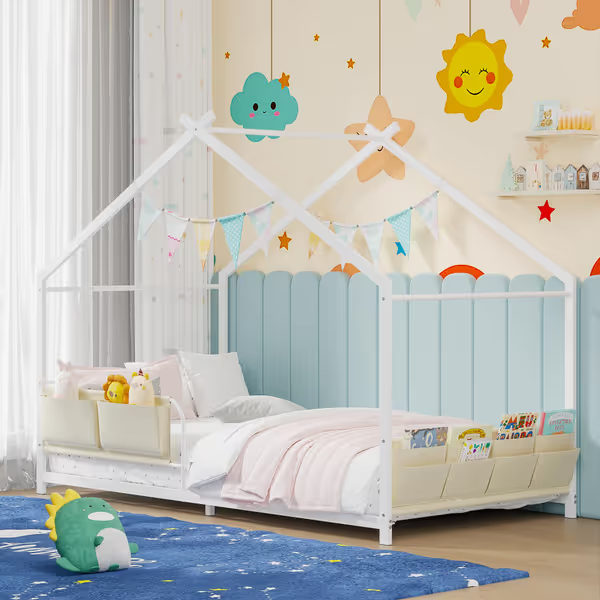
Timy House Shape Twin Montessori Bed
When to Walk Away: The 3 Unfixable Red Flags
Not all second-hand beds are salvageable. Immediately reject any item with:
- Lead paint traces: EPA swabs ($10 at hardware stores) must show negative results. Peeling paint? Non-negotiable no.
- Structural cracks: Hairline fractures in wood or metal frames worsen with use. Repair beats replace, but only for surface scratches, not compromised integrity.
- "Modified for safety": Added cutouts, DIY climbing rails, or glued-on bumpers. "Don't use products that have adaptations," warns The Lullaby Trust (they often create hidden entrapment points).
The Verdict: Is Used Worth the Risk?
For most space-constrained families, certified new beds deliver better value. The DaVinci Colby's GREENGUARD Gold certification guarantees tested low-VOC finishes, a relief when your nursery doubles as a living room. And its convertible design (crib -> toddler bed -> daybed) beats cycling through second-hand options. Meanwhile, the Timy Montessori Bed's metal frame and adjustable rails offer wiggle-free stability for active sleepers in tight layouts, all at near thrift store prices.
But if you're committed to second-hand:
- Budget $50+ for safety upgrades (VOC testing, lead swabs, replacement hardware)
- Prioritize 2015+ models with traceable model numbers
- Demand proof of no modifications (no "grandma's special touches")
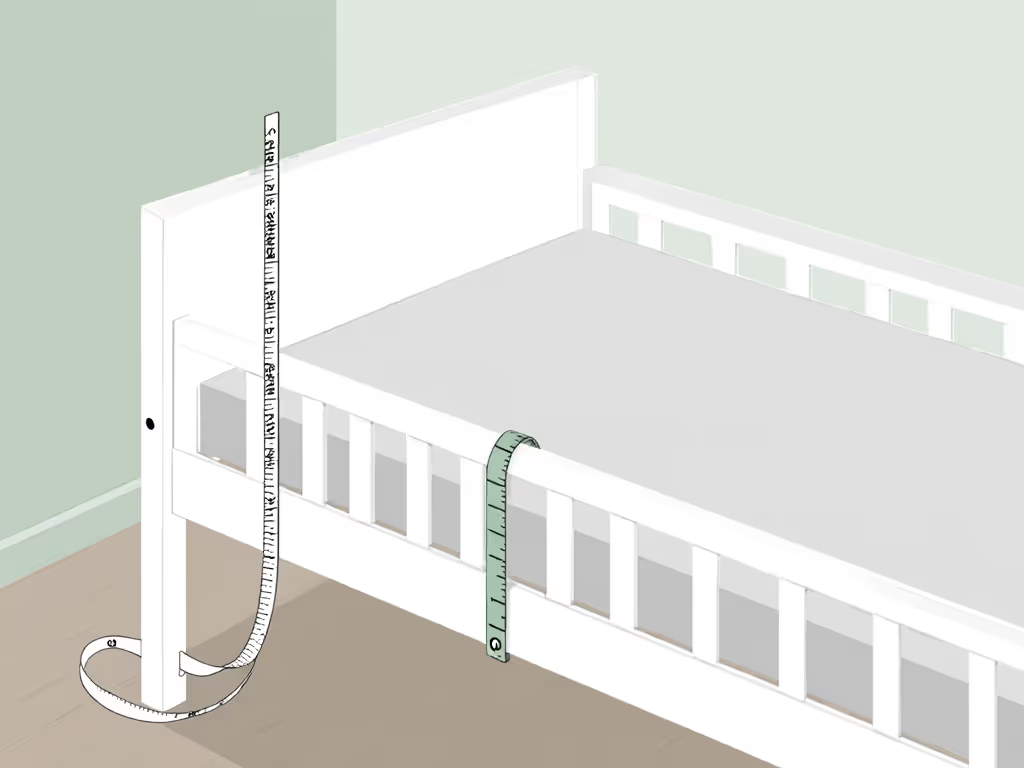
Final Thought: Calm Rooms Start With Calm Materials
That hallway-week odor test changed my parenting philosophy: Healthier materials make calmer rooms. You won't regret investing in verified safety, especially when your toddler's sleep space is also your living room. By focusing on solid wood, water-based finishes, and repairable designs, you're not just buying furniture. You're building a foundation for restful nights in even the tiniest homes.
Further Exploration:
- Download the "Crib & Bed Safety Checklist" from Healthy Housing Solutions
- Test indoor air quality with a $49 Awair Omni monitor (tracks VOCs in real time)
Related Articles

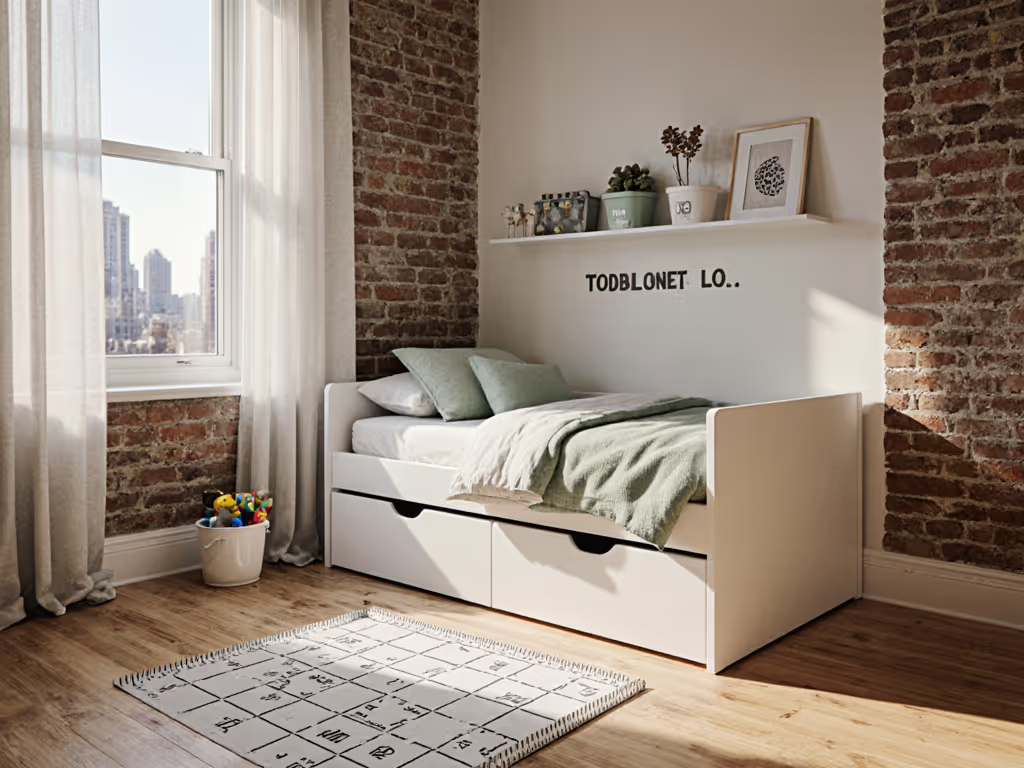
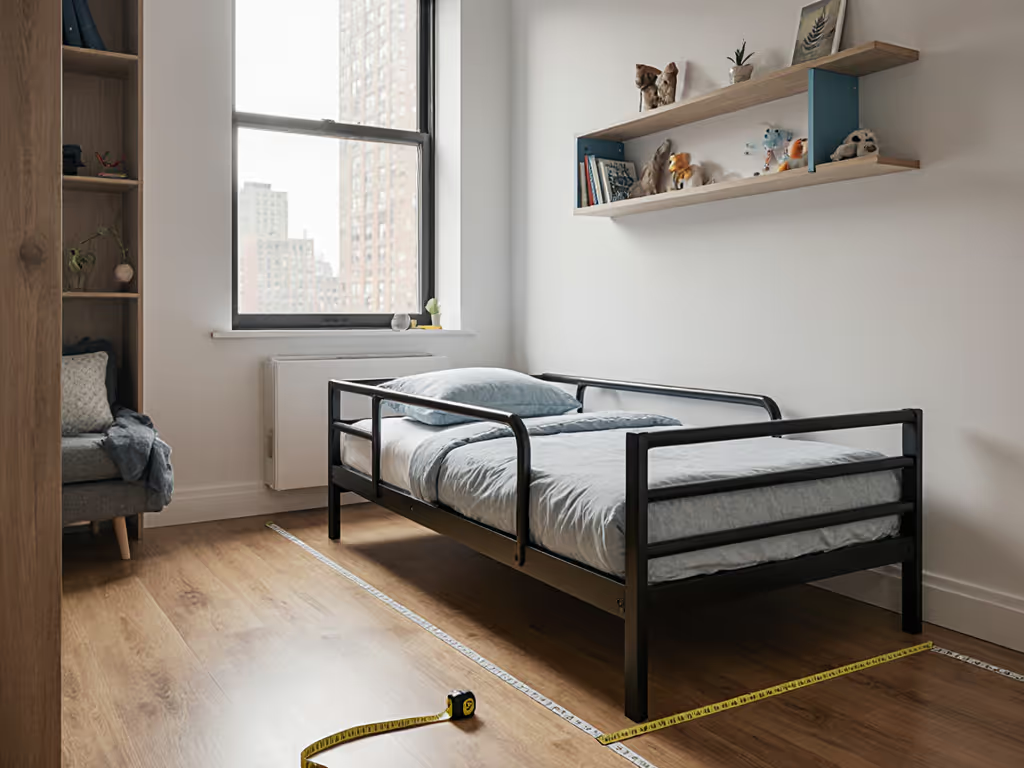
Verified Amazon Toddler Beds for Real Room Fit
Choose a toddler bed that truly fits tight rooms without compromising safety by verifying real footprint, clearance zones, guardrail design, and VOC transparency. Follow the checklist and consider the Delta Children Canton as a reliable pick while avoiding oversized twin frames that waste space and increase fall risk.
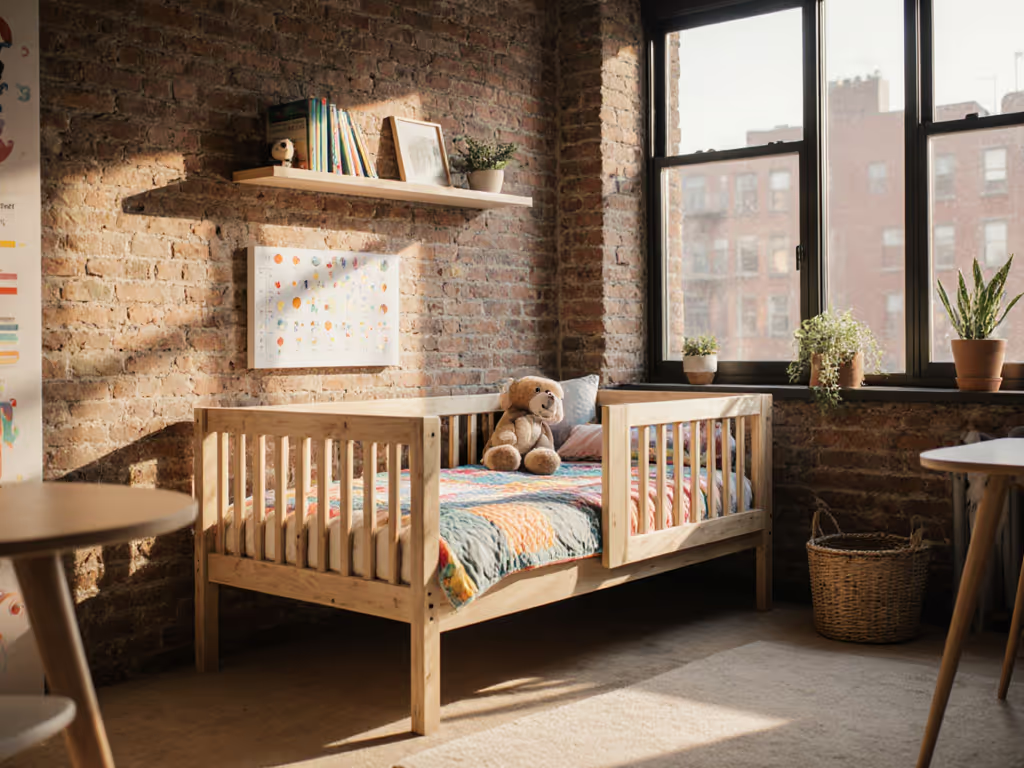
Affordable Toddler Beds Under $150: Top 7 Value Picks
Compare seven sub-$150 options through total cost of ownership and real resale data to pick beds that fit small spaces, reuse mattresses, and hold value. Use the included checklist on compatibility, assembly time, and storage to buy once, resell easily, and minimize true cost.
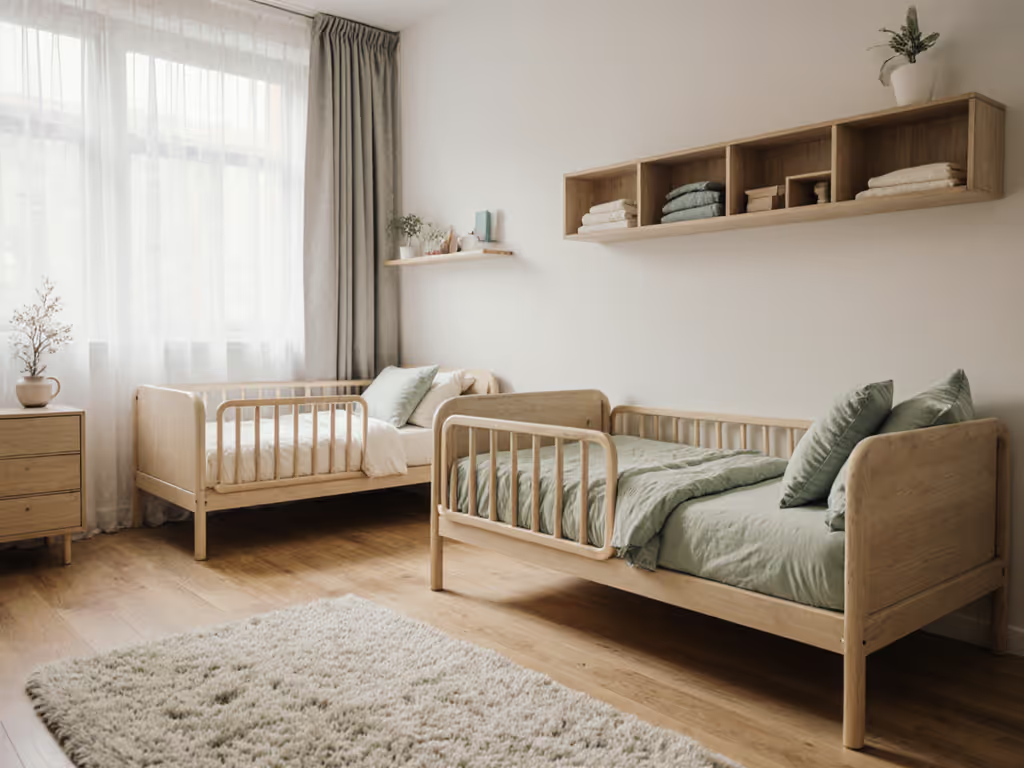
Best Selling Toddler Beds: Safe Compact Designs On Sale Now
Learn how to choose space-saving, Montessori-aligned toddler beds that support independence and meet safety standards, with clear specs on heights, guardrails, storage, and corner-hugging layouts. Get practical room-planning tips and a compact, twin-compatible option to make small bedrooms calmer and safer.
